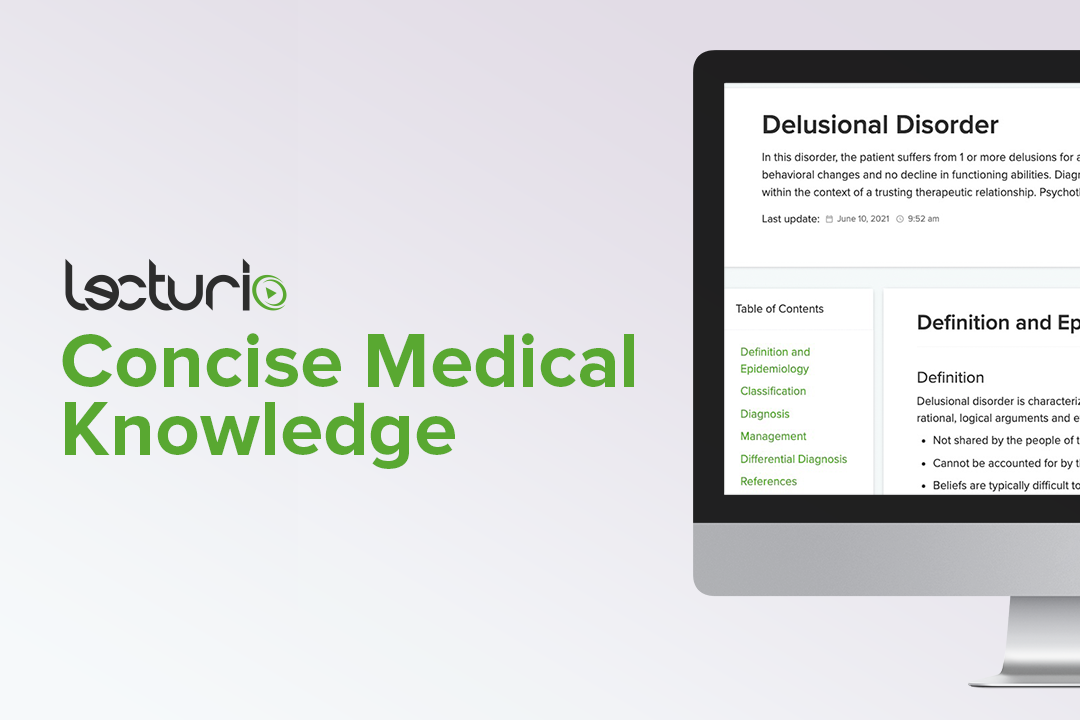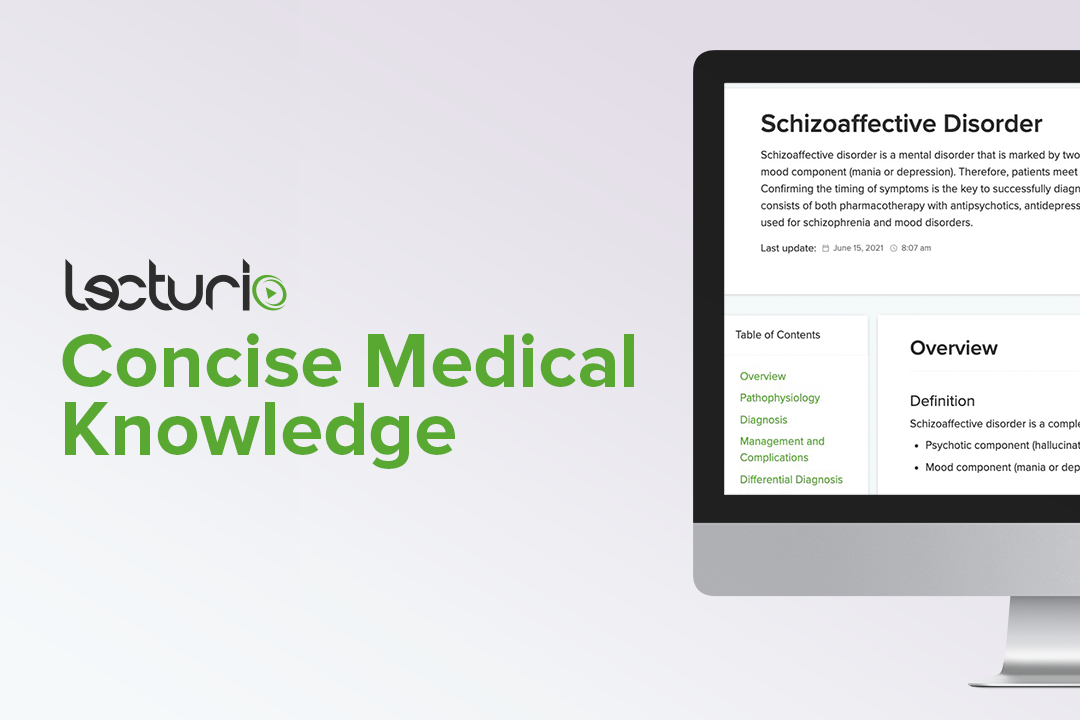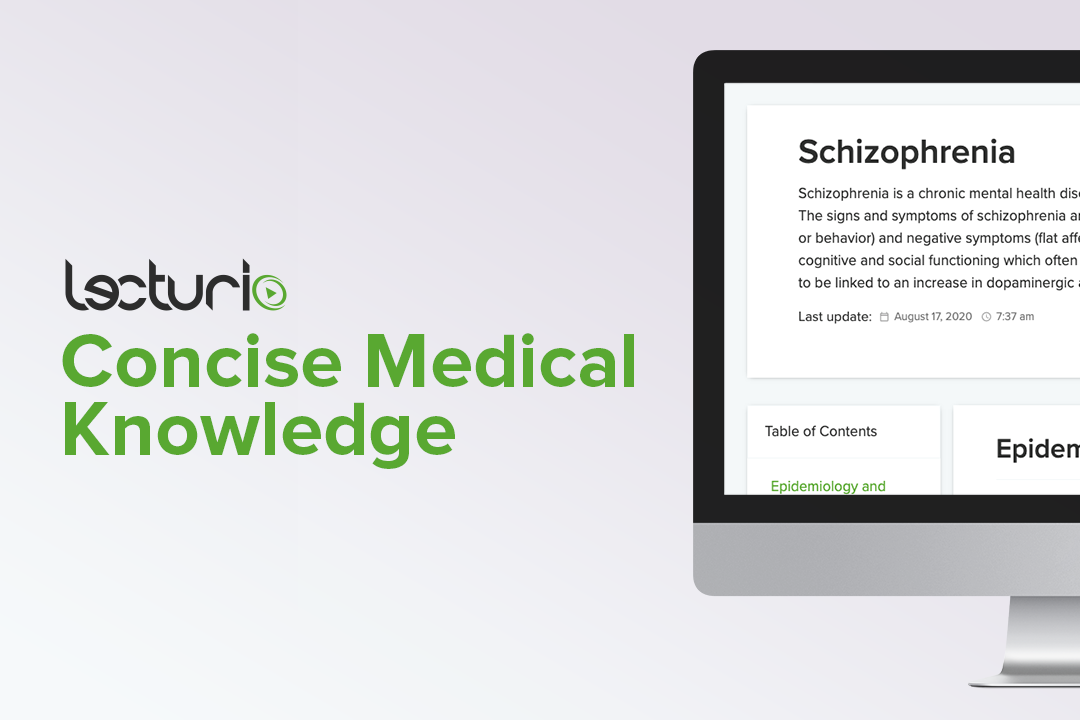Playlist
Show Playlist
Hide Playlist
Thought Disorders
-
Slides ThoughtDisorders Psychiatry.pdf
-
Download Lecture Overview
00:01 Now, let’s talk a little bit more about the thought disorders. 00:06 There are different types of thought disorders. 00:08 We think about disordered thought content. 00:11 This looks like disruption in a patient’s beliefs, ideas, and interpretations of their surroundings. 00:20 Disordered thought process is a manner in which the patient links ideas and words together. 00:27 Let’s consider a couple of the common types of thought disorder. 00:32 What do you think it means when we say a patient has alogia or poverty of content? Well, this is where very little information is conveyed by speech. 00:45 How about thought blocking? In clinical practice, this is when a patient suddenly loses their train of thought. 00:52 It’s exhibited by an interruption in their speech and then they have trouble picking right back up again. 00:58 Loosening of associations describes a speech content notable for ideas presented in sequence that are not closely related. 01:08 So it’s where somebody jumps all over the place. 01:11 Tangential though process is another type of disorganized thought. 01:17 So this is where answers to interview questions diverge increasingly from topic to topic being asked about. 01:26 Some call this circumstantiality if the is eventually returned to the original topic. 01:33 When somebody’s tangential, they basically go off course and can never return to the point. 01:40 Clanging or clang association is another type of thought disorder. 01:45 So this is where words are used in a sentence that are linked together by rhyming or due to phonetics. 01:52 Here’s an example of what a patient might say. 01:54 “I fell down the well sell bell.” So things rhyme, but they don’t really make any sense used together. 02:02 A word salad is another important type of thought disorder and this is where real words are linked together but incoherently. 02:11 So it’s nonsensical. 02:14 An example would be a patient saying, “Tree way of nothing house.” It makes no sense. 02:21 A perseveration is repeating words or ideas persistently often even after the interview topic has changed, so it’s where somebody really can’t let go of a point and they just keep bringing it up over and over again. 02:37 I want to give you this case study to consider. 02:40 Mr. B is a 22-year-old man. 02:42 He’s been having trouble in college. 02:45 Rather than graduating on time, he has had to repeat a few years due to an inability to get to class because he has low motivation. 02:55 So his parents come out to college to visit him and they find his dorm room a complete mess. 03:01 Their son, Mr. B, is malodorous and he has not been taking care of is hygiene. 03:07 He talks nonsense when his parents ask him what’s wrong. 03:12 The only thing they can decipher is their son saying, “My professor wants to kill me.” So you meet Mr. B in the emergence room and you start evaluating him. 03:24 If this is all you know at this point, what’s your differential diagnosis? Of course, it’s broad, so you’re going to consider all of these things. 03:33 All right, so you’re going to consider general medical conditions. 03:37 Now, I can’t overemphasize this point enough. 03:40 Whenever considering a psychiatric disorder, you must always consider medical conditions first. 03:46 They’re easy to treat and more likely to be reversible. 03:50 Also think about whether or not this disorder and whether or not these symptoms are actually substance related. 03:57 Something else that can be quickly treated and possibly reversed. 04:02 Beyond that, you’re going to think of some psychiatric disorders, like a brief psychotic disorder, schizophreniform disorder, schizoaffective, schizophrenia, schizotypal personality disorder, a mood disorder with psychotic features and you may think of schizoid personality disorder. 04:23 So when you consider that case of Mr. B, you’ve got a broad differential diagnosis now. 04:28 And on the top of your list, of course, is a general medical problem. 04:33 So when it comes to psychosis, what types of general medical problems are important to rule out in treating your patients? It’s a long list, so let’s go through it. 04:43 Delirium, you’re going to think of this. 04:46 Of course, delirium is a frequent cause of psychotic symptoms, okay? And this could be duet to fluid or electrolyte abnormalities. 04:57 Also, substance intoxication or withdrawal. 05:00 Hypoglycemia, hypercapnea, hypoxia or infections or from other medications. 05:07 These are all possible causes of a delirious patient that could look psychotic. 05:12 We’re also going to think of endocrine problems, things like thyroid disease, parathyroid or adrenal disease. 05:19 And then the liver can be disrupted and also present as psychotic symptoms. 05:24 So think about hepatic encephalopathy and uremic encephalopathy. 05:28 Other medical causes, you’re going to want to rule out our infectious diseases, things like syphilis, herpes, Lyme disease, prion disorder, and HIV or AIDS. 05:38 Inflammatory disorders like lupus, anti-NMDA receptor encephalitis, leukocytosis or leukodystrophies, multiple sclerosis. 05:52 And you’re going to think of metabolic disorders like porphyria or Wilson’s disease. 05:58 Other things to rule out are neurodegenerative diseases, things like Lewy body dementia, Huntington’s disease, Parkinson’s, and Alzheimer’s. 06:08 There are other neurological conditions include space-occupying lesions like a tumor, seizure disorder or stroke and any kind of a head injury or trauma to the brain. 06:20 Finally, you want to rule out if there’s a vitamin deficiency, especially B12. 06:25 Now, because there’s a long list, we have here a summary, an acronym that you may find useful in thinking about what categories and groups of medical conditions can present as a psychotic disorder. 06:42 At the end of this lecture, now, I hope that you appreciate how important it is to formulate a differential diagnosis for the psychotic patient especially including general medical conditions and the substance abuse problem and to rule out anything that could be easily treatable and reversible before formulating a psychiatric diagnosis.
About the Lecture
The lecture Thought Disorders by Helen Farrell, MD is from the course Schizophrenia and Thought Disorders.
Included Quiz Questions
Regarding thought disorders, which of the following terms best defines the "sudden loss of the train of thought exhibited by the patient as interruption of speech"?
- Thought blocking
- Thought transference
- Alogia/poverty of speech
- Loosening the association of thought
- Thought reference
Regarding thought disorders, which of the following terms best describes "the repetition of the same words or ideas by the patient, even after the interview topic has changed"?
- Perseveration
- Word salad
- Clanging
- Alogia
- Word interruption
Which of the following is a metabolic disorder that can be associated with psychosis?
- Wilson’s disease
- SLE
- Fabry disease
- Phenylketonuria
- Maple syrup urine
Customer reviews
4,0 of 5 stars
| 5 Stars |
|
0 |
| 4 Stars |
|
1 |
| 3 Stars |
|
0 |
| 2 Stars |
|
0 |
| 1 Star |
|
0 |
It is very easy to understand the topic and well organized







